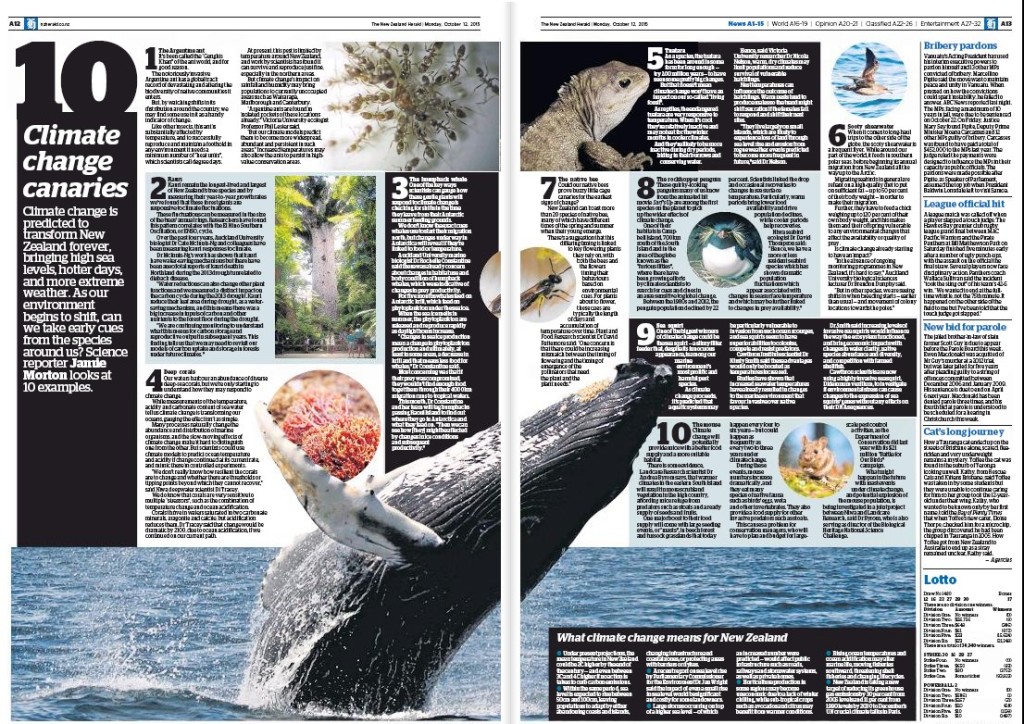What are the ‘sentinel species’ that are first affected by a warming climate? Science Reporter Jamie Morton investigates in today’s New Zealand Herald.

An excerpt (read in full here):
10 Climate Change Canaries
Climate change is predicted to transform New Zealand forever, bringing high sea levels, hotter days, and more extreme weather. As our environment begins to shift, can we take early cues from the species around us? Science reporter Jamie Morton looks at 10 examples.
1. The Argentine ant
It’s been called the “Ghenghis Khan” of the ant world, and for good reason.
The notoriously invasive Argentine ant has a global track record of devastating and altering the biodiversity of native communities it enters.
But, by watching shifts in its distribution around the country, we might find some use in it as a handy indicator of change.
Like other insects, this ant is substantially affected by temperature, and to successfully reproduce and maintain a foothold in any environment, it needs a minimum number of “heat units”, which scientists call degree days.
Presently, this pest is limited by temperature around New Zealand, and work by scientists has found they can survive and reproduce just fine, especially in the northern areas.